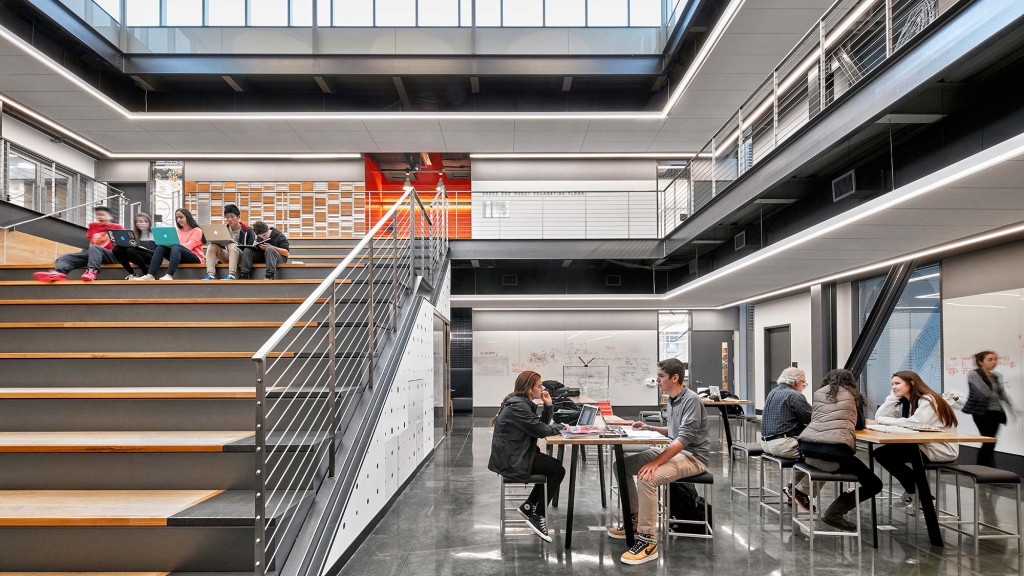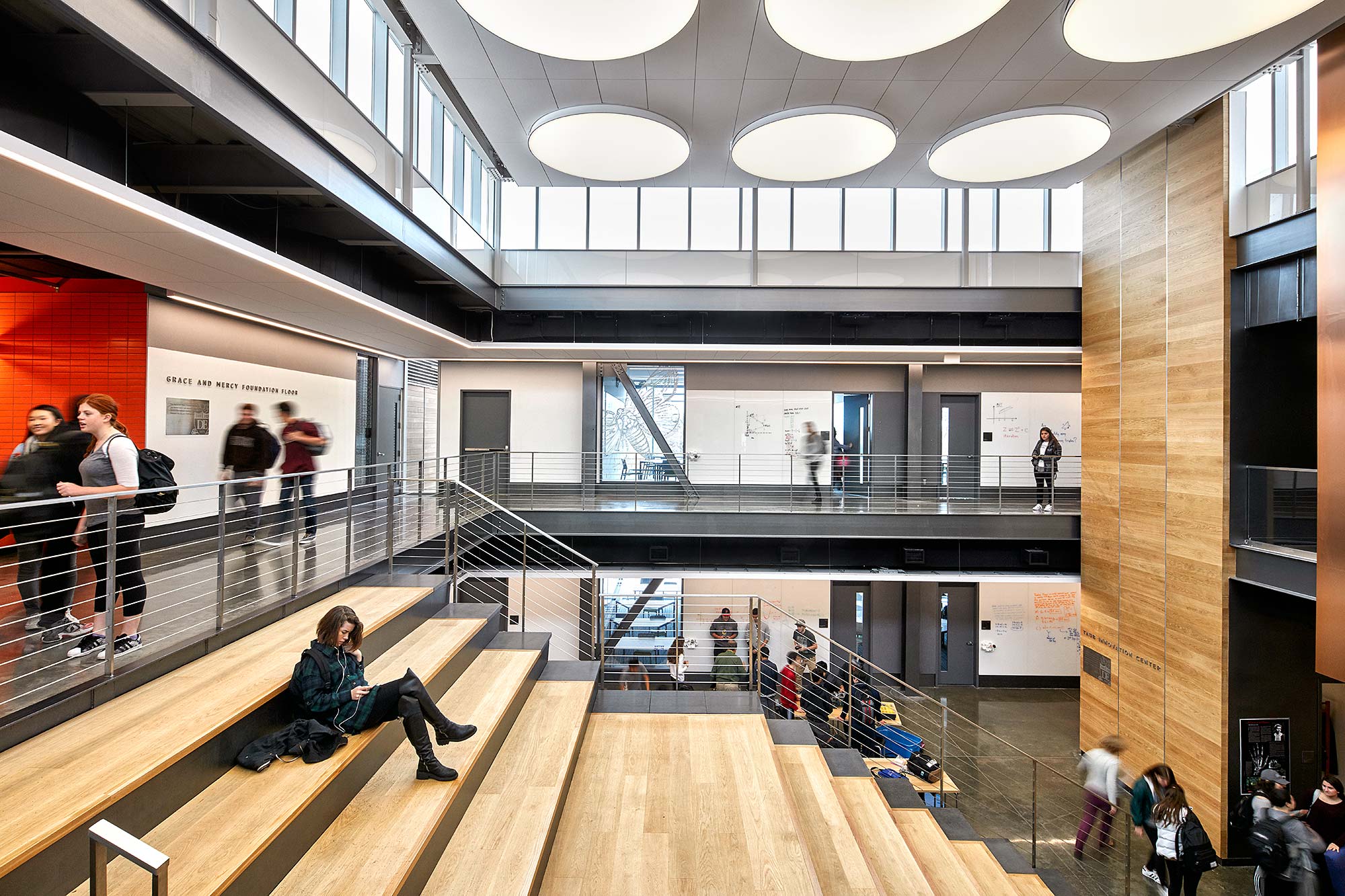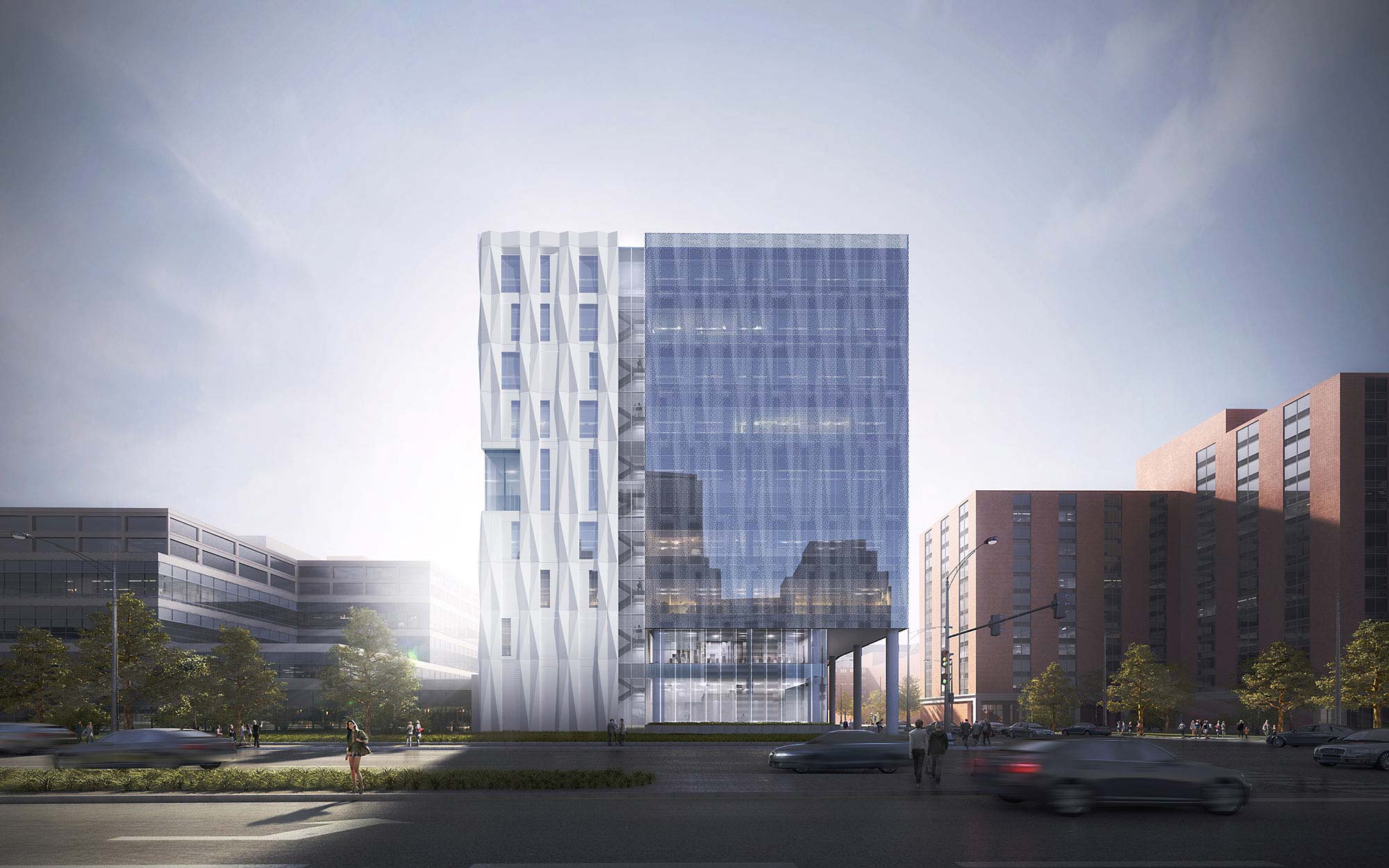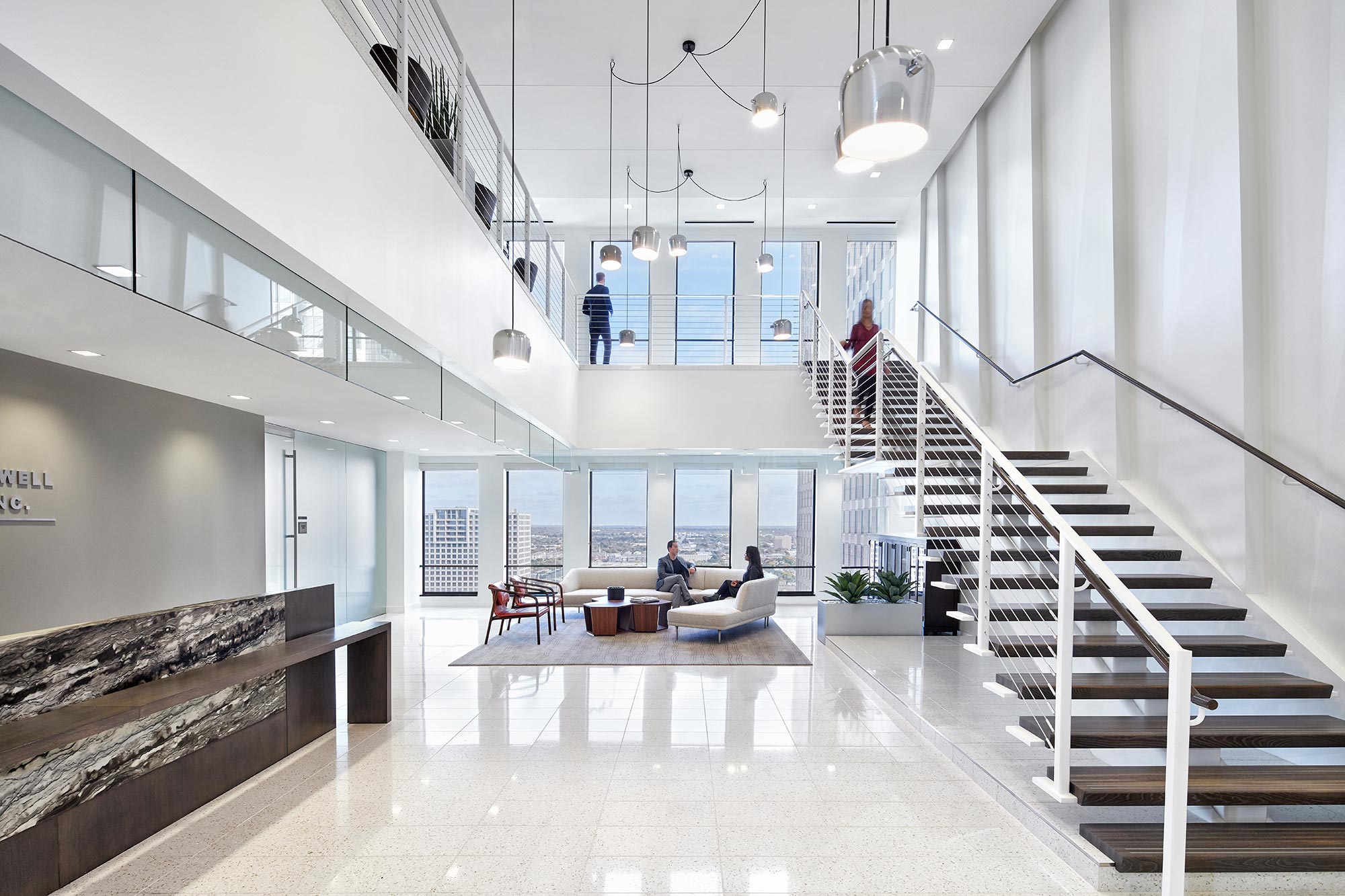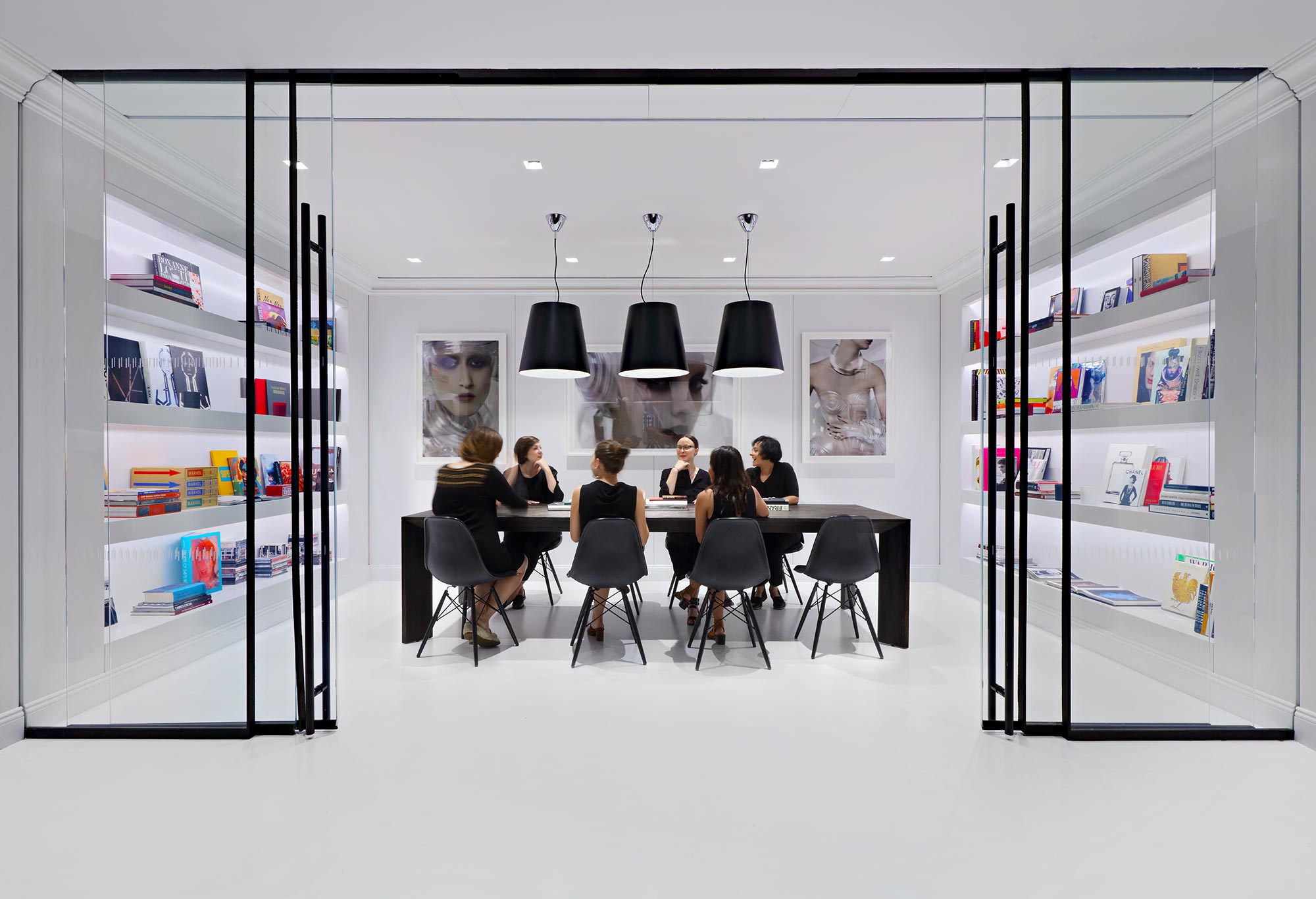03 Designing for Everyday Impact
Expectations of inclusivity will tip the balance toward community and transparency. The boundary between the public realm and private or exclusive may be more porous and nuanced, especially when public-serving open space or cultural elements are involved.
The places in between can easily slip off public and private maps. If settings like this are intrinsic to the everyday, their stewards will want to be more visible. Upkeep and safety are givens, but these places will attract patrons and impresarios of the experience.
The desire for urbanity will favor a richer, denser, and less expected mix of people and activities. The embrace of a startup, freelance, maker, artisanal, farm-to-market economy will give rise to hybrid settings, used intensively, that change from day to night.
Part of people’s desire to shape experience is the expectation that it will be accessible to them. It means that experience will be designed to compensate for differences in sensory perception. It will enable people to navigate the unfamiliar.
Students today have grown up with unprecedented access to information. They have the tools to forge their own learning paths, and a belief in doing so. To provide students the personalized and hands-on approach they expect, schools are leveraging technology and maker culture, and restructuring their curricula. In the process, education itself is being reinvented. But not all at once; for this shift to happen, space really matters. It is an active part of these evolving pedagogies.
The most successful spaces empower students to solve things that matter to them in their larger social context. This kind of problem-solving often requires more collaboration and a diversity of learning styles. Educational institutions are asking for spaces flexible enough to accommodate these new modes.

DAVID
BROZ
Education Practice Area Leade
“The most important thing for students today is that they become critical, intelligent, and creative thinkers: How can space help activate that in them?”
The classrooms at Dwight-Englewood’s new Hajjar STEM Center are spacious, with movable furniture and writable walls; they more resemble labs and studios—where students can move around and work differently depending on the assignment—than traditional classrooms. Students are also encouraged to make use of the shared spaces outside of the classroom for more hands-on activities. This visibility and interactivity prompt students to look at things from multiple perspectives and to integrate those perspectives in their thinking process.
Gensler research on both education and workplace shows that more collaboration and the use of different spaces for different work modes correlate to higher levels of creativity and innovation.
Transparency plays a big role in creating these settings. At the University of Kansas School of Business, it serves to spark connections and inspire a more entrepreneurial culture for the whole campus. And at Duke Kunshan’s sustainable campus, learning happens everywhere and with everyone, to support a diversity of learning styles and innovative learning strategies.
Transparency also communicates the larger context of education today—the partnerships with business, government, and communities that educational institutions are forming. These relationships make education relevant, while elevating the roles of learning, creativity, and curiosity in other sectors of society. This new context of education positions universities as anchors of growth for their communities.
- TAILORED: Schools are reevaluating how students learn best, and how to teach them the skills they really need.
- FLEXIBLE: Schools need flexibility to allow collaboration and support a diversity of learning styles.
- CREATIVE: Schools want students to become creative thinkers. How do their settings activate that in them?
Addressing the root causes
In order to deliver the best care effectively and
efficiently, healthcare systems are looking to address the root causes of health and disease. Because that typically points back to a patient’s life beyond the hospital walls, more providers are positioning themselves as hubs of care for their communities, providing not only critical services, but outreach too—a wide range of services, to promote well-being inside and outside of
their facilities.
Making healthcare accessible
The Cook County Health and Hospital System has a long legacy of providing community-based care to the underserved. The new Central Campus Health Center expands that mission. The new facility—combining clinical, administration, and educational spaces—is designed to elevate the well-being of patients and of the community. It visibly communicates the future of accessible, state-of-the-art healthcare, prioritizing outpatient “health” care and reducing the need for costly inpatient “sick” care.

TAMA
DUFFY DAY
Health & Wellness Practice Area Leader
“Healthcare organizations are focused on keeping people healthy. Design supports this by creating new access points to health and care across our communities.”
The nature of care and its settings are changing to achieve farther-reaching solutions. In favor of the collaboration and interdisciplinary partnership that speed innovation and reduce cost, the healthcare industry as a whole is forming an integrated network focused on holistic outcomes for individuals and whole populations. The new China R&D Center of MSD (or Merck in the US and Canada) shows the global, research-driven face of the industry.
- HUMAN-CENTERED: Healthcare is increasingly personal—think DNA sequencing—and accessible—enabling digital as well as physical access.
- COMMUNAL: To keep people healthy, more providers are positioning themselves as hubs of care for their communities, providing a wide range of services, to promote well-being inside and outside of their facilities.
To keep pace, companies are reinventing the workplace to adapt to these changes and deliver innovation. In San Francisco, the law firm Coblentz Patch Duffy & Bass LLP approached Gensler to help with their move from the Ferry Building to the Financial District. In the process, they reduced their real estate footprint by nearly one-third.
The downsizing prompted the firm to dissect their ways of working and prioritize needs. They opted for a single-size-office strategy that reflects their democratic culture, and added welcoming social spaces. Corner locations house informal meeting areas rather than partner offices. And a dramatic interconnecting stair provides places for collaboration and impromptu conversations.
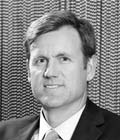
DOUG
GENSLER
Project Principal
“In the 21st century, a headquarters must deliver an environment that enables high-performance work. In addition, it should convene collaborators from the broader community.”
In San Jose, California, the three-tower, 1 million-square-foot campus of Adobe was reimagined to empower creativity, encourage community, and inspire innovation. The West Tower, for example, was reconfigured from 100 percent enclosed offices into an open floor plan. Now it features a variety of communal areas and alternative workspaces that draw people together and inspire creative thinking.
To encourage staff to interact, the 14th-floor breakroom was relocated from the heart of the building to the end, where it captures pedestrian flow from the other towers and receives more daylight. A large communal table, kitchen island bar, and collaboration spaces on each end of the breakroom offer alternative workplaces. Amenity spaces include three cafés and a fitness center tailored to yoga, meditation, relaxation, and exercise.

JANET POGUE
McLAURIN
Firmwide Workplace
Sector Leader
“Our research found that innovators not only have more effective workspaces, but they have twice as much access to certain amenities—and more choice, meaning, and purpose.”
Creativity and performance
Today the optimal workplace is a platform for creativity and performance. In Boston, a new waterfront headquarters for General Electric embodies GE’s transformation into a digital industrial company—one that creates an open, collaborative, and sustainable experience. The design highlights the connection between GE's rich history and
a forward-looking view through the renovation of two historic factories and construction of a new 12-story building. The combination will drive
a diversity of experiences and cross-fertilization
of ideas, which accelerate innovation.
An important feature of the campus is its extensive indoor and outdoor public space. GE looks to engage the Boston ecosystem in idea generation, creating solutions that will have impact worldwide. The new building is set back from the waterfront, allowing the landscape to flow through public spaces. The indoor public areas will include a maker space, a bistro, and an experience center. The community lounge will function both as a reception area and coworking café space for public use.
Enriching a vibrant community
The office of the future even comes in the guise
of tradition, as it does at 25 Kent, a new commercial office building in Brooklyn’s Williamsburg neighborhood. Designed to reflect the area’s industrial past, the mixed-use complex is forward-looking in the way it addresses workspace design for growing technology companies. With floor plates that vary from 40,000 to 60,000 square feet, the building has a modular layout that adapts easily to tech’s changing needs. Additional space is dedicated
to light manufacturing to accommodate the maker community. Ground-floor frontage along the perimeter and internal streets will add the vitality of retail, artisanal food and drink, and local goods and services.
- MOBILE: The transformation reflects organizations flattening, collaboration increasing, and technology freeing workers from their desks.
- CULTURE: The optimal workplace gives people flexibility, choice, transparency, and connectivity.
- ALIGNMENT: Innovation happens when the workplace supports the individual, the team, and the community.
In 2016, Gensler completed the most recent installment in our 10-year Workplace Survey research effort—a global initiative that spanned the US, UK, Asia, and Latin America. Based on the responses of more than 11,200 office workers, the four surveys represent a wide range of geographies, industries, ages, and job roles.
In our US Workplace Survey alone, we gathered data from more than 4,000 randomly sampled office workers in 11 industries to understand where and how work is happening today—and the role design plays in employee performance and innovation. Our 2016 US data uncovered a statistical link between the quality and functional makeup of the workplace and the level of innovation employees attribute to their companies. By comparing employees with the highest innovation scores to those in the lowest category, we arrived at the conclusions shown to the right.
![]()
THE US DATA
CONFIRMS THAT
INNOVATORS:
- Have better designed workspaces of all types.
- Spend less time at their desks.
- Have more choice in when and where to work.
- Have greater access to amenities.
- Report more meaning and purpose in their work.
![]()
INVEST
in more functional workplaces and effectively manage those functions.
![]()
DIVERSIFY
beyond the desk by including a variety of group workspaces.
![]()
EMPOWER
the organization by giving people choices about when and where to work.
![]()
CONNECT
employees with the mission, purposes, and meanings behind their work.
